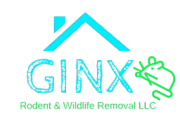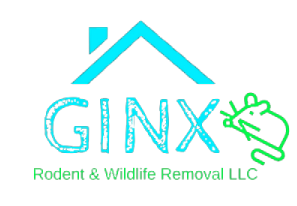Winter in San Antonio brings cooler temperatures, but wildlife activity doesn’t slow down. As animals seek warmth and shelter, homes often become unintended targets for infestation, putting them in dangerously close contact with people.
Understanding which species pose the greatest risks—and how to address their presence ethically—is key to coexisting safely with local wildlife.
Below, we outline the most common winter intruders, signs of their activity, and science-backed strategies to resolve conflicts without harm.

- Raccoons
Raccoons are drawn to attics, crawl spaces, and chimneys for nesting. These intelligent mammals can pry open vents, dislodge roof shingles, and tear through insulation to create dens. Telltale signs include overturned trash bins, droppings near entry points, and nocturnal scratching noises.
Humane removal begins by verifying all animals have exited the structure and then installing one-way exclusion devices over access points. These tools allow raccoons to leave but prevent re-entry. Reinforcing vulnerable areas with steel mesh and trimming overhanging branches reduces future access.
- Rodents
Mice and rats thrive in winter, exploiting gaps around pipes, vents, and foundations to infiltrate walls and pantries. Their presence is often detected by gnaw marks on food packaging, shredded insulation, or grease trails along baseboards. Rodents pose fire hazards by chewing electrical wiring and contaminating surfaces with pathogens like salmonella.
Effective management combines sealing entry points with copper wool (a material resistant to gnawing) and deploying snap traps placed strategically away from children and pets.
- Squirrels
Tree squirrels and flying squirrels frequently invade attics during winter, chewing through wooden beams and ductwork. Scratching sounds at dawn or dusk, and scattered nesting materials like leaves or insulation indicate their activity. Squirrels may also hoard food in hidden voids, attracting secondary pests.
Ethical eviction involves using one-way doors paired with exterior habitat modification. Relocation is discouraged as displaced squirrels struggle to survive in unfamiliar territories.
- Opossums
Opossums, North America’s only marsupial, often take refuge under decks, sheds, or low crawl spaces. While they help control pests like ticks and cockroaches, their scavenging habits can damage gardens and outdoor structures. Look for trampled vegetation, scattered garbage, or hissing sounds when threatened.
Passive exclusion is ideal. Secure trash cans with bungee cords and block access to sheltered areas. These creatures are non-aggressive and typically vacate on their own.
- Snakes
Though less active in winter, some snake species—like rat snakes and garter snakes—may enter garages or basements during cold snaps. Shed skins, elongated droppings, or rustling noises in cluttered storage areas signal their presence. Most local species are non-venomous and beneficial for rodent control.
Never handle venomous species; instead, contact professionals trained in safe relocation.
Creating a wildlife-life-resistant home through ethical practices means getting regular inspections, modifying the landscape, securing food sources, and prioritizing lethal deterrents.
Wildlife conflicts require patience and empathy. Many animals are simply adapting to habitat loss, and humane solutions prioritize coexistence over eradication. For complex infestations, partnering with specialists who employ ethical, science-backed methods guarantees your safety and protects the wildlife from harm.







